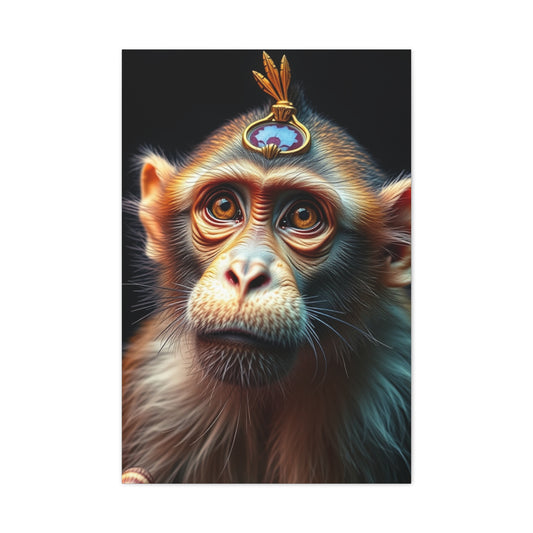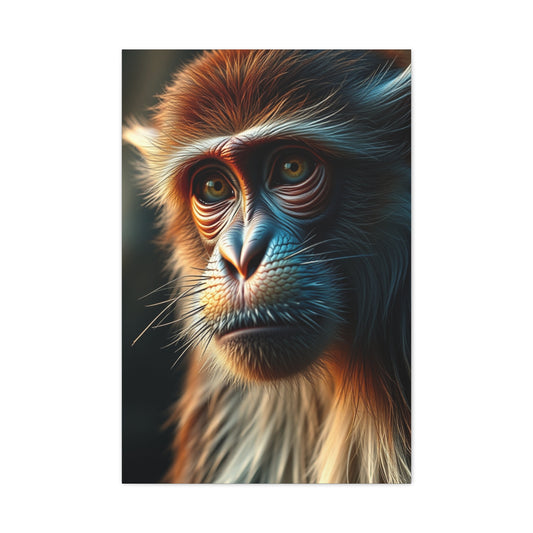Stepping into a living room that fully embraces the eclectic spirit is like entering a world where creativity meets intention. It is not a random assortment of styles thrown together, but a seamless blend of influences, colours, and textures that carry a sense of both individuality and harmony. An eclectic living room is a story told through furniture, artwork, and decor, each chapter reflecting different cultural or historical inspirations yet tied together through balance and purpose. This is not an invitation to visual chaos; it is a lesson in creating a space where seemingly contrasting design voices merge into a fluent conversation. It can be the meeting of mid-century elegance with rustic warmth, or the subtle presence of Scandinavian minimalism paired with industrial strength.
The success of such a space depends on intention. Every object must feel like it has a reason to be there. Whether it is a patterned rug brimming with character or a minimalist sofa with clean lines, each element should contribute to the room’s narrative. The aim is to capture warmth and personality without disrupting visual rhythm. It is about striking that delicate balance where nothing feels out of place, even if it comes from a completely different design heritage.
Visualize a bright, sophisticated, eclectic interior where daylight streams through tall windows, casting gentle light across cream walls and vibrant solid tones. Lighting choices hint at different eras, perhaps a globe-shaped lamp with Art Deco charm alongside an angular modern chandelier. A traditional rug in warm neutrals grounds the space, offering contrast to the airy brightness above. Low coffee tables create an approachable atmosphere, while upholstered dining chairs invite lingering conversations. In true California eclectic style, leather details appear through a sling chair, a pouffe, or even a modest bookshelf trim, adding tactile depth. Layered textiles in varied fabrics rest naturally across furniture, offering comfort without creating clutter, making the room feel both welcoming and refined.
On the other end of the spectrum, imagine a Scandinavian-influenced eclectic layout. Its beauty lies in simplicity, but with an allowance for playful personality. A woven cream sofa whispers comfort, its understated texture adding richness without visual heaviness. A low marble coffee table subtly reflects natural light, while a solitary wall hosts a traditional portrait that lends a sense of history. Just across the room, a bold abstract photograph leans casually against the wall, injecting a spark of contemporary energy. Beneath the seating area, a cobalt blue rug acts as a steadying anchor, softening its presence with a collection of cushions in varied materials. This arrangement becomes versatile, equally fitting for a sophisticated gathering or a laid-back evening. It captures a dual character: formal in structure yet relaxed in spirit, perfectly embodying the eclectic charm.
For those drawn to grounded and earthy environments, a marriage of industrial and traditional influences can be deeply satisfying. A muted beige wall accented with warm browns and crisp white trim sets the backdrop. Raw wood and brushed metal pieces, perhaps in a handcrafted media console or minimalist stools, bring unpolished authenticity. A sturdy wooden coffee table at the heart of the seating arrangement becomes both a tactile centerpiece and a visual anchor, surrounded by soft seating in gentle neutrals. The contrast between industrial grit and traditional softness prevents either from dominating, achieving an ideal balance. A cool-toned rug pulls the scheme together, adding depth without visual discord.
If your tastes lean toward lively and whimsical expressions, a colourful, eclectic living room can be a source of daily delight. Pastel yellows may harmonize with deep jewel tones,and dainty furniture lines may mingle with oversized, plush cushions. A wall-mounted library filled with favourite books serves as a functional yet emotional anchor. A vintage portrait can add narrative richness, while a bottle-green sofa dotted with mismatched pillows becomes a confident focal point. Beneath it all, a multicoloured rug serves as a unifying canvas, merging diverse hues into a single composition. This type of space embraces evolution, welcoming seasonal shifts or the addition of unexpected treasures from travels or flea markets. A quirky lamp, an art print, or a handcrafted vase can easily find a home here, contributing to the personality without overwhelming the senses.
Even in small spaces, eclectic charm thrives when proportion and cohesion are respected. A woven basket filled with cosy throws may sit next to a tall floor plant, introducing a touch of organic softness. A jade green sleeper sofa can serve as both a design highlight and a practical solution for guests. Carefully chosen abstract art connects with the periwinkle walls, ensuring visual flow without redundancy. A gallery wall of personal photographs, sketches, and collected artworks can keep the room’s character fresh, offering a rotation of visual stories that make the space feel alive. Small eclectic rooms succeed by focusing on intimacy, transforming even the smallest corner into a reflection of personality and warmth.
Perhaps the most vital rule of all is selective display. The temptation to showcase every beloved trinket is strong, but in eclectic interiors, editing is just as important as collecting. A well-curated selection allows each piece to shine. The goal is not to fill every shelf, but to give breathing space so that each object feels intentional. Restraint ensures the space remains visually open, allowing the personality of the room to emerge without clutter. Eclectic living rooms are ultimately a mirror of life itself, layered with experiences, places, and memories that weave together into an ongoing narrative.
A Fresh Perspective on Eclectic Living Room Inspiration
The eclectic living room is more than a decorative style; it is an evolving canvas that adapts to the life and personality of its owner. It celebrates the blending of cultural and historical influences, weaving them into a cohesive whole that feels deeply personal. The key lies in harmonizing differences rather than forcing uniformity. This philosophy turns the living room into a space that welcomes, intrigues, and inspires.
Picture a room where every detail has been considered not for its match but for its contribution to the story. The sofa may be contemporary, its clean form softened by a handwoven throw, while across the room a vintage sideboard might display a collection of ceramic vessels gathered over the years. The lighting might tell its own tale, with pieces from different eras working together to create a layered atmosphere. The room becomes a dialogue between eras and aesthetics, an exchange that feels fluid rather than forced.
An eclectic home also thrives on contrasts in texture and tone. Smooth marble beside rough timber, soft textiles against sleek metals, airy neutrals grounded by deep colour accents juxtapositions create depth and intrigue. They encourage the eye to travel through the space, discovering subtle connections between elements that at first glance seem unrelated.
In a more whimsical interpretation, a room might feature layers of vibrant hues and playful patterns that instantly lift the mood. A mustard velvet armchair might sit confidently beside a sleek glass-topped coffee table, while a wall of open shelving showcases everything from well-loved novels to framed travel photographs. This approach invites spontaneity, allowing new finds to become part of the evolving composition without disrupting balance.
The Scandinavian-inspired approach to eclecticism offers a subtler expression. It relies on natural light, pale hues, and clean lines as a base, then surprises with select bursts of colour or bold artwork. The furniture remains understated, allowing textures like woven wool, matte ceramics, and polished stone to create richness. This measured style appeals to those who appreciate calmness but still want moments of visual intrigue.
Industrial-infused eclectic rooms lean into the raw beauty of exposed materials while tempering them with softness. Metal-framed shelving, reclaimed wood furniture, and exposed brick may be offset by plush rugs, layered cushions, and warm lighting. The effect is a room that feels grounded and authentic, one that tells a story of resilience and comfort in equal measure.
Small eclectic spaces, though limited in footprint, can still carry immense personality. Clever use of multifunctional furniture, layered lighting, and thoughtfully scaled decor ensures they remain functional while expressing individuality. Every object counts in these environments, making curation even more critical.
Ultimately, eclectic living rooms succeed when they feel intentional yet effortless, a space where every choice contributes to a larger narrative. They invite guests to linger, encourage conversation, and offer constant visual interest. This is not a style that can be rushed; it grows over time, shaped by experiences, tastes, and the ever-changing flow of life. In its best form, the eclectic living room is a true reflection of the person who calls it home, blending influences into a space that is as layered, complex, and beautiful as life itself.
The Art of Texture and Layering in Eclectic Living Rooms
If an eclectic living room could be compared to music, texture would be its melody, weaving together the different notes into something harmonious and memorable. It is the heartbeat that transforms a space filled with varied objects into a room that feels immersive, tactile, and alive. In eclectic interiors, texture is not an afterthought or an accessory to colour; it is the very glue that binds together furniture from different eras, lighting inspired by diverse cultures, and art that transcends stylistic boundaries. It breathes life into the interplay of shapes, tones, and materials, creating an emotional depth that pure visual coordination cannot achieve.
The most captivating eclectic spaces are often those where texture makes its statement before colour even enters the conversation. Imagine the sleek coolness of a marble coffee table surrounded by the lush embrace of a velvet sofa, or the organic grain of an oak sideboard playing quietly against the matte softness of a wool rug. These tactile contrasts invite touch and curiosity. Layering natural fibres, supple leather, woven rattan, brushed brass, and aged linen creates depth without visually overwhelming the room. In spaces leaning toward a Scandinavian eclectic aesthetic, there is a delicate balance at work. Soft woven upholstery coexists with the clean lines of glass or polished surfaces, while organic fabrics temper the sharp edges of modern furniture. Even the smallest infusion of texture, such as a loosely draped knitted throw over a minimalist armchair, can introduce a warmth that makes the space feel instantly more intimate.
In a truly eclectic living room, texture is the silent storyteller. The patina of a leather ottoman speaks of years of use and comfort, while a woven cane chair may recall warm summers and coastal breezes. When thoughtfully combined, these elements transform a space from a collection of items into a unified sensory experience. Texture in this context becomes a language, one that tells stories through the surfaces we see and feel.
Pairing contrasting textures without letting them clash is the key to keeping the eclectic style refined rather than chaotic. A low-slung wooden coffee table takes on a refined elegance when accompanied by the subtle gleam of metallic fixtures. A richly patterned, plush rug feels grounded when placed alongside a clean-lined, neutral-toned sofa. The guiding principle is to let one or two statement textures hold the spotlight, while the supporting textures work quietly in the background, adding interest without competing for attention. This is where the industrial-eclectic hybrid particularly shines. The raw edges of metal shelving find warmth when set against a backdrop of painted brick or subtly textured plaster walls. Leather upholstery in rich, earthy tones harmonises beautifully with the warmth of natural wood, creating a solid foundation for smaller, playful accents. The result is a space where each layer feels intentional and balanced.
Textiles, in particular, carry emotional resonance within eclectic spaces. A fringed throw might recall a long afternoon spent browsing a bustling Moroccan market, while an embroidered cushion could serve as a memento from a coastal artisan village. These are not simply decorative accessories; they are personal memoirs, woven into the narrative of the home. In a colourful, eclectic living room, layered textiles can create a tapestry-like atmosphere where every piece contributes to a larger visual composition. Rugs are especially powerful in this storytelling role. A cobalt blue carpet can act as the anchor for a Scandinavian-inspired space, while a well-worn vintage kilim might form the heart of a globally influenced interior. The technique of layering rugs, such as placing a smaller, vibrant patterned rug atop a larger, neutral base, can add depth and help define distinct zones in an open-plan layout, encouraging the eye to explore different corners of the space.
Lighting, too, is an often-underestimated contributor to texture in eclectic interiors. While its primary purpose is illumination, light also shapes the atmosphere and adds another layer of tactile perception. A brass chandelier with sculptural arms might not only light a room but also create patterns of shadow and reflection that shift throughout the day, turning the simple act of lighting into a form of visual drama. In a bright and sophisticated living room, the interplay between cream-coloured walls and the soft glow of warm-toned lighting can transform a space from airy to cinematic, adding richness to its ambience. Eclectic lighting thrives on the unexpected a minimalist pendant hanging above a distressed wooden table, or a retro desk lamp placed beside a cutting-edge modular sofa. These juxtapositions not only provide functional light but also create moments of intrigue, reinforcing the layered nature of the eclectic style.
A well-curated eclectic living room is a tactile journey, with each surface, material, and fabric inviting interaction. There is an art to choosing and positioning these textures so that they create depth without visual overload. This often involves an instinctive understanding of contrast, rough against smooth, warm against cool, matte against glossy. Every choice, from the rug underfoot to the upholstery on the furniture, is an opportunity to enhance the sensory dimension of the room. In this way, texture becomes more than a stylistic tool; it becomes how an eclectic living room tells its story, engaging both the eye and the hand.
Layering Without Chaos
Layering in an eclectic living room is a balancing act that requires restraint and purpose. Without a clear sense of composition, the layering of textures and patterns can quickly tip into visual noise. The key is to approach layering like a conductor guiding an orchestra, allowing different instruments to shine without drowning each other out. In practical terms, this means selecting one or two hero textures to take the lead, while using subtler, more neutral textures to fill out the composition. This prevents the space from feeling overwhelming and ensures that each element has room to be appreciated.
One of the most effective ways to layer without chaos is to pair opposites in a way that feels deliberate rather than random. For example, a streamlined modern sofa in a neutral hue becomes more visually compelling when set against the bold character of a patterned wool rug. Similarly, a rustic wooden coffee table can be elevated when paired with the polished sheen of brass or chrome accents. This interplay of contrasts allows each texture to highlight the other’s qualities. In an industrial-eclectic context, these principles take on a more robust form. Rough-hewn wooden shelves, exposed steel supports, and vintage leather seating create a strong architectural presence. Introducing elements such as soft linen drapery or a thick wool throw tempers the hardness and creates a space that feels both structured and welcoming.
Textiles remain one of the most versatile tools in the layering process. A collection of cushions in varied fabrics from smooth silk to coarse jute can create depth without needing to introduce more furniture or architectural changes. Layering rugs is another technique that works particularly well in open-plan living areas. Placing a richly coloured kilim atop a large neutral sisal base can define a conversation area while adding visual interest underfoot. The top layer draws the eye, while the base provides stability and cohesion, much like an underpainting in a work of art.
Lighting plays a dual role in this layering process. On one hand, it illuminates the space, ensuring that each texture and detail is visible. On the other hand, the fixtures themselves can introduce additional layers of visual interest. The shadow play from a pierced metal pendant or the glow from a frosted glass lamp can subtly alter the perception of textures within the room. The use of multiple light sources, ceiling fixtures, floor lamps, wall sconces, and table lamps, allows for dynamic lighting that can change with the time of day and the mood of the space. This fluidity is especially important in eclectic interiors, where the interplay of diverse elements benefits from lighting that can shift to highlight different focal points.
Ultimately, the art of texture and layering in eclectic living rooms lies in the ability to create harmony from diversity. It is about embracing variety while maintaining a sense of order, using texture as the thread that ties together disparate pieces into a cohesive whole. A successful eclectic space is one where every object feels like it belongs, not because it matches, but because it contributes to the shared narrative. Texture and layering are the tools that make this narrative tangible, turning a room into a living, breathing work of art that invites exploration and rewards closer attention.
Colour Harmonies and Visual Rhythm in Eclectic Spaces
Colour in eclectic interiors is more than a decorative choice; it is the driving force that sets the emotional pulse of the space. Just as texture shapes the melody, colour defines the heartbeat, influencing the atmosphere and guiding how the room feels to those who enter it. In eclectic living rooms, where styles, eras, and influences converge, colour plays the critical role of transforming variety into harmony. Instead of throwing every shade into the mix, the magic comes from selecting and blending hues that tie the room’s diverse components into a coherent visual experience. It becomes the bridge between furniture styles, artwork, and architectural elements, turning what might otherwise feel disjointed into a unified, inviting whole.
A successful eclectic colour story begins with an anchoring foundation. This grounding palette might be built from warm neutrals like soft beige, deep taupe, and gentle cream, or from cooler tones such as layered greys and soft charcoals. These base shades act as the stage where bolder, more adventurous colours can shine without overwhelming the senses. In an industrial-eclectic space with beige and brown undertones, this foundation ensures that wood, metal, and textured fabrics can stand out in balance, offering a warm yet controlled backdrop. In compact living rooms, a calm base tone opens up the space, giving breathing room for artworks, patterned cushions, and statement pieces to take centre stage without crowding the viewer’s eye. It is this considered restraint that makes the more daring details feel intentional rather than chaotic.
Colour in eclectic interiors is not only a background element but a connector. It threads seemingly unrelated objects into a cohesive visual narrative. A deep bottle green sofa, for instance, can subtly reappear in the trim of a patterned rug or in the brushstrokes of a bold artwork, creating an echo that moves the eye naturally from one point to another. This repetition forms an unspoken visual rhythm, the kind of flow that allows the room to feel curated rather than thrown together. In a Scandinavian-eclectic setting, a cobalt blue rug can do more than make a dramatic entrance; when paired with matching-toned cushions and art pieces that nod to the same hue, it transforms into a visual anchor. That single choice reverberates throughout the room, turning multiple style influences into a unified story.
The interplay between saturation and value deepens the narrative of colour in eclectic spaces. Saturated shades bring vibrancy and a sense of play, while muted tones exude sophistication and calm. Mixing both in one room creates a layered emotional palette. Imagine a pastel-and-jewel-tone living room where the softness of buttery yellow walls is complemented by rich emerald velvet drapes. The gentle and the opulent coexist, each enhancing the other. This balance ensures that the viewer’s gaze moves smoothly around the room, engaging with each element without feeling visually overloaded. The contrast between brightness and depth becomes a form of rhythm in itself, almost like verses and choruses in a song, each playing a role in the story.
Accent colours in eclectic interiors are the sparks that bring personality to the forefront. These are not random pops of colour but recurring notes that punctuate the space with intention. An accent works best when it appears at least three times in a room, weaving a subconscious pattern for the brain to follow. A terracotta tone might emerge in a ceramic vase, repeat itself in a patterned throw cushion, and surface again in the painted base of a lamp. This repetition builds a sense of connection between disparate objects, assuring the observer that the space is not a scattered collection of finds but a deliberate composition. The beauty of accents lies in their versatility; they can be drawn from anything from architectural trims to statement artwork, each time reinforcing the same harmonious thread.
In eclectic living rooms, visual rhythm is as important as the palette itself. Rhythm emerges from how colours lead the eye, from one detail to another, and how they interact with textures, patterns, and shapes. Just as in music, the repetition and variation of colour create a cadence that makes the space feel alive. The key is not to overwhelm but to sustain a flow where every note feels necessary. Too many high-intensity colours without balance can cause visual fatigue, while a carefully measured sequence of bold, muted, and neutral tones can keep the eye engaged for far longer.
When colours are thoughtfully placed, they begin to tell micro-stories within the space. A corner vignette of warm terracotta pottery might connect to a nearby rust-toned throw, which in turn relates to the amber glints in a metallic wall hanging. Across the room, a jewel-toned ottoman could find its companion in the undertones of an abstract canvas, creating a cross-room conversation of colour. These intentional links invite the viewer to explore the room slowly, discovering connections as they go. It transforms the experience of the room into something participatory, where the observer feels a subtle sense of satisfaction in recognising the interplay of hues.
A successful eclectic palette is not static; it can evolve with the seasons or the shifting mood of its inhabitants. In the cooler months, deeper accent colours like burgundy or navy can be introduced through blankets, candles, or even seasonal artwork, creating a sense of warmth and intimacy. As the weather warms, swapping them for lighter shades like coral, turquoise, or fresh leaf green can instantly refresh the room’s energy. This fluidity is part of what makes eclectic style so adaptable thrives on layering and re-layering, keeping the heartbeat of the space alive and responsive to its surroundings.
The psychological effect of colour in eclectic interiors should not be underestimated. Warm colours tend to bring a sense of intimacy and sociability, while cooler tones create an airy, calming effect. By deliberately pairing these qualitiesperhaps a warm mustard chair in a room dominated by cool greysyou achieve a space that feels both lively and relaxed. This emotional layering makes the room not just visually harmonious but experientially balanced, a place where the energy shifts seamlessly between vibrancy and repose.
Ultimately, the role of colour in eclectic spaces is to create a home that feels like a reflection of its owner’s personality while maintaining an aesthetic that is pleasing to the eye. It is about understanding that every shade, whether bold or understated, has a role to play in the symphony of the room. By establishing a base, connecting elements through repeated hues, balancing saturation and value, and using accents strategically, eclectic spaces achieve a kind of visual music. The room becomes a place where the eye never tires of wandering, always finding something new yet familiar, fresh yet harmonious, spontaneous yet anchored. This is where eclectic style finds its true charm, where the heartbeat of colour brings together an infinite variety of voices into a single, compelling conversation.
Curating Personality and Longevity in Eclectic Living Rooms
An eclectic living room thrives on individuality. More than any other style, it mirrors its inhabitants’ personalities, values, and evolving tastes. It is not a matter of following seasonal décor fads but of shaping a deeply personal narrative through colours, textures, and meaningful objects. The longevity of such a room is never about keeping it frozen in a single moment of time but about ensuring it can adapt gracefully as life changes. This adaptability is the secret to a space that feels authentic for years to come. When the room’s foundation is rooted in personal connection rather than fleeting style, it naturally accommodates new phases, interests, and even unexpected finds without losing its charm.
Every element within this kind of room tells part of the story. Collecting pieces with care and intent turns the space into a living diary. An eclectic home is not built overnight; it evolves as you discover items that resonate, whether they are heirlooms, travel souvenirs, or unexpected treasures picked up at a flea market. The magic lies in how these objects come together to form a cohesive atmosphere that feels like no one else’s. Over time, each change, addition, or subtle shift in arrangement adds another chapter to the room’s ongoing story.
Bringing longevity into an eclectic living room begins with choosing foundational elements that anchor the space. A sofa in a timeless fabric, a sturdy coffee table with clean lines, or a favourite rug with versatile tones can serve as constants. These anchor pieces allow more experimental items to rotate in and out without disrupting the balance. For instance, a Scandinavian-eclectic blend might hold on to its cream-toned sofa and a deep cobalt rug for years, while the surrounding accessories, wall art, and soft furnishings shift to reflect new moods or design phases. This structure allows the room to remain fresh without losing the familiar warmth that makes it yours.
Evolving with Purpose While Maintaining Harmony
An eclectic living room’s adaptability is part of its strength. Swapping out textiles according to the season, rotating art to showcase new pieces, or introducing accent colours can refresh the atmosphere instantly. In a snug, intimate space, even a single change can have a big impact. Picture a jade green throw that feels lush in spring being replaced with a rust-hued blanket in autumn, instantly transforming the room’s mood. Or envision a refreshed gallery wall arrangement that breathes new life into familiar surroundings. These small but thoughtful updates keep the space dynamic and responsive to both the time of year and your evolving taste.
Balancing novelty and continuity is one of the more subtle arts of maintaining an eclectic living room. Too many new additions without a grounding palette or repeated textures can cause the room to lose cohesion. Too much continuity without occasional updates can make the room feel stagnant. This is where consistency in certain materials, colour families, or patterns is invaluable. Woven baskets, brass accents, or a recurring botanical motif can link old and new pieces seamlessly. Even when artwork, cushions, or decorative accessories change, these recurring elements tie everything together, ensuring that each update feels like an organic progression rather than a sudden shift.
One of the most overlooked aspects of curating an evolving eclectic space is the power of selective display. Just because a piece is beautiful or sentimental does not mean it needs to be on show all the time. Rotating collections based on season, theme, or even mood prevents visual fatigue and allows each object its own moment to be appreciated. This approach also invites you to re-experience your own belongings with fresh eyes when they return to view after some time in storage. The joy comes not just from acquiring new pieces but from rediscovering old favourites in a new context.
Over time, this method creates a space that is alive and resonant. An eclectic living room becomes a visual and tactile reflection of who you are, where you have been, and even where you might be headed. It is a space that invites you to engage with it, not just pass through it. Each shift in colour, texture, or arrangement adds to the narrative without erasing what came before. This sense of continuity amid change is what gives such rooms their unique longevity.
An evolving eclectic space is also a deeply sustainable way to live. Rather than replacing everything during every style shift, you are reusing, reimagining, and recontextualising existing pieces. A chair can move from one corner to another and feel entirely different when paired with a new side table. A set of prints might be reframed in a fresh style to suit an updated palette. This approach reduces waste while keeping your interiors engaging and personal. It also creates an ongoing relationship between you and your surroundings, where you are both curator and audience.
Embracing change within a stable framework allows your living room to grow with you. Life events, travels, and changing seasons all leave their mark, but the underlying character of the room remains intact. This is not about perfection but about resonance. The most successful eclectic spaces are those that feel deeply lived in, where every object has been chosen for the way it makes you feel rather than the way it fills a space. When you walk into such a room, there is an immediate sense of recognition. It reflects the present moment while leaving space for the next chapter.
Conclusion
An eclectic living room, when approached with intention and openness to evolution, becomes far more than a collection of furniture and décor. It is a living record of your tastes, experiences, and creativity, a place where continuity and novelty coexist. By choosing meaningful pieces, maintaining a grounding palette, and allowing for regular refreshes, you create a space that adapts gracefully over time. The result is a room that never feels stagnant yet always feels like home, a place that grows with you while continuing to express your unique personality in every detail.




























